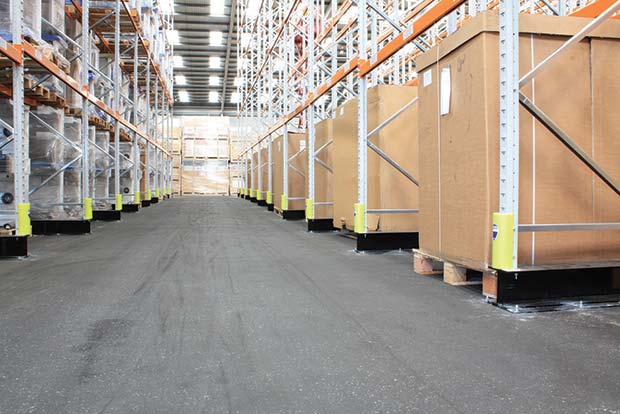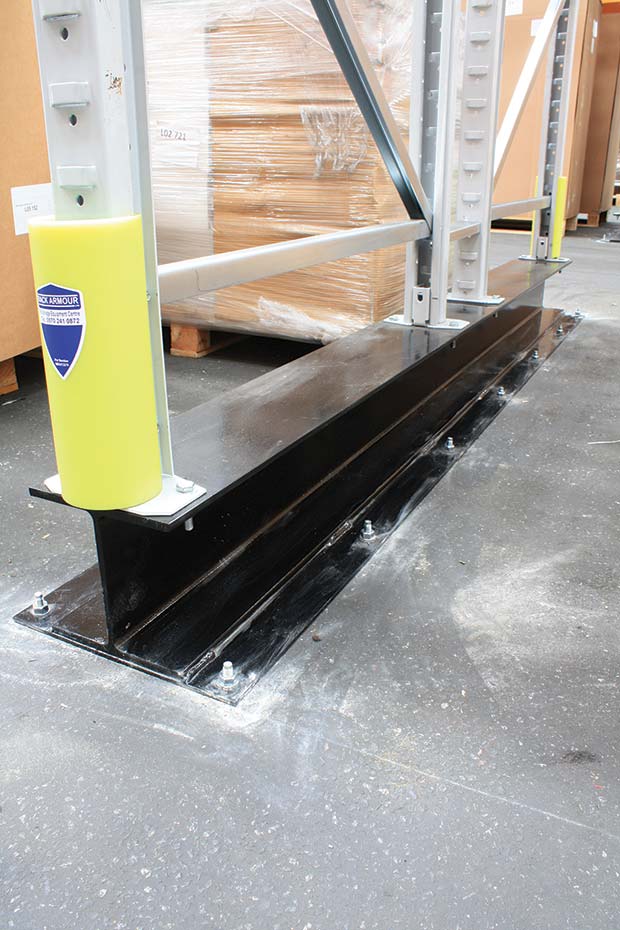Bulk stacking pallets on the warehouse floor is often considered the most advantageous solution for logistics providers with a fast moving operation however, this does not always prove the most effective use of space. Maritime Transport (Maritime) needed to increase storage capacity at its Portside Logistics Centre in Tilbury, London to support its diverse range of rail-connected, port-centric warehouse services. The ideal solution proved to be a pallet racking system, and a bespoke design to work with the existing warehouse floor.

The challenge
The warehouse floor at the 200,000ft2 facility in Tilbury is made up of 150mm of asphalt over a load transfer mattress sitting on stone columns. Designed to take a uniformed distributed load of 8,000kgs/m2, this is ideal for the bulk stacking of pallets and containers. However when the installation of pallet racking was considered, it presented a number of challenges.
Unlike a warehouse slab made up of reinforced concrete designed to withstand the loads applied by a pallet racking system, an asphalt floor cannot support the point load of the racking system with the feet just piercing the surface and potentially breaking up under the load.
The solution
 Having appointed SEC Storage (SEC), Maritime and SEC worked closely together to design a storage solution that not only overcame the constraints of the warehouse floor but improved operational requirements too, including pallet capacity.
Having appointed SEC Storage (SEC), Maritime and SEC worked closely together to design a storage solution that not only overcame the constraints of the warehouse floor but improved operational requirements too, including pallet capacity.
The solution identified was to erect the racking directly onto a 203 x 203 x 46mm universal column spreader I-section beam capable of dissipating the point load of the pallet racking’s 12,000kgs bay load evenly across the asphalt surface. During further detailed design, SEC calculated that the double-entry racking could be staggered to avoid adverse point load where two frames meet. Whilst this configuration complied with the 10:1 height to width ratio of the SEMA Code of Practice for the Design of Adjustable Pallet Racking there were concerns for the stability of the system. SEC therefore further developed the design of the storage system to provide a double length universal column spreader I-section beam complete with 350 x 6mm welded plate which was bolted directly through the asphalt into the concrete sub-base. This meant the racking would be a standard double-entry configuration on a 5:1 ratio utilising a 2,400mm long spreader which would withstand the revised 248kn total point load even on the asphalt surface.
Storage capacity
The key driver for the project was to increase warehouse capacity and adaptability, as the pallet criteria could change at any time depending on contract awards. SEC developed a wide aisle configuration utilising a reach truck forklift. This solution provides the flexibility to accommodate any standard or non-standard palletised load within the warehouse, enabling Maritime to offer a wider range of storage solutions to its customers.
The designated area for the racking system within the warehouse has the capacity to store over 4,750 pallets. Not only does this mean a significant increase in capacity over bulk stacking, but it provides Maritime with operational efficiencies too through faster pallet selection.
“We were looking for a practical, palletised storage solution to optimise warehouse capacity and efficiency at Tilbury,” commented Darren Constantine, Portside Logistics Manager. “SEC has delivered a high quality, modern pallet racking system to extend our cargo storage and handling capability and provide a more effective workspace in our warehouse.”
Portside Logistics Centre at the Port of Tilbury is Maritime’s first port-centric facility in the UK, providing port-based storage, handling and consolidation services to importers and exporters and installing the new storage system has enabled the company to expand its capacity and deliver more storage options and off-dock, supply chain solutions to its customers.




Comments are closed.